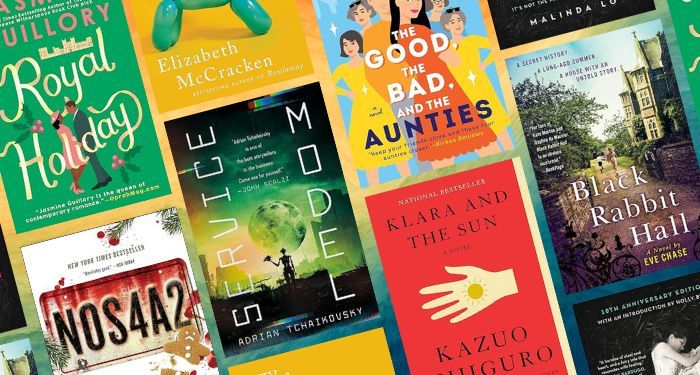The monstrous, the grotesque, the uncanny—horror’s tropes have long provided figures through which queerness finds articulation, with both liberatory and suppressive consequences. Here, bodies defy definition and desire warps. But the horror landscape is also shifting. No longer confined to the subtextual periphery, contemporary queer horror is carving out its own terrain, reveling in its excesses and capacity to transform traditional genres.
My own work as an author of queer horror texts, such as my forthcoming books Return to the Planet of the Vampires and Beyond the Planet of the Vampires, draws from the generosity of this proliferant, experimental landscape. Queer texts search out the raw nerve of horror: a fuzzy limit where the body and the unknown meet, where terror and desire collapse inside abjection and ecstasy. If you’re looking for horror that refuses convention and speaks polyphonically from the fringes of identity and accepted reality, these seven books will sear themselves into your thoughts. These books dismantle form and consume language, reassembling what remains into new possibilities that transgress the binary of the living and the dead. Long live the new flesh!
Model Home by Rivers Solomon
Rivers Solomon’s fiction thrives in the liminal, suturing emotional and political urgency together with speculative terror. Model Home employs familiar conventions of the haunted house narrative only to raze them. This novel outlines the architecture of trauma, exploring the ways history lingers spectrally alongside the impossibility of finding sanctuary in a world that nominates you as monstrous. Centered on a nonbinary Black protagonist who returns with their siblings to the gated Texas community where they were raised, the story navigates both personal and ancestral hauntings. Solomon’s work often tackles issues of survival and in their latest novel, where the protagonist’s dreams of home are foreclosed on in every sense, survival reveals itself to be a continuous haunting.
Our Share of Night by Mariana Enríquez
Few writers capture the ominous and uncanny ambience of horror fiction like Mariana Enríquez. In Our Share of Night, a father and son traverse Argentina, pursued by an occult order that seeks to possess them. Enríquez uses horror as atmosphere and allegory for dictatorship, grief, and the brutally intimate failures of the notion of family. She crafts a novel where terror is both supernatural and socio-historical. The novel seethes with menace, but at its core, it is a story of inheritance, documenting what we acquire from our predecessors—as well as what is violently taken from us in the exchange.
Nefando by Mónica Ojeda
Mónica Ojeda’s Nefando is a work of conceptual horror fiction. This book operates like a glitching, hypervirulent internet conspiracy theory: something only half-perceived but totally disturbing. The novel follows six young people living in a Barcelona apartment, linked by a mysterious video game—one that dredges up trauma, violence, and a language beyond language. The horror of the text exceeds the material realm, festering in the structure of communication itself. The novel’s fractured, nonlinear storytelling mirrors the contagious, addictive quality of the digital space, itself impossible to unsee.
Medusa of the Roses by Navid Sinaki
Sinaki’s Medusa of the Roses is a hypnotic fever dream of a novel that stokes the horrors of longing, loss, and aesthetic decay. Sinaki’s prose, charting an affair between two men in Tehran, unfolds like a fractured tableaux steeped in obsession. Beauty is transmuted, revealing its spectral and menacing foundations. This book queers mythology and the aesthetic atmospherics of horror into relentless existential dread. Sinaki’s prose is lush, drawing the reader in with quiet, inescapable persistence. This decadent horror novel examines the terror of being seen, desired, and ultimately undone.
With Bloom Upon Them and Also with Blood: A Horror Miscellany by Justin Phillip Reed
Reed’s collection of nonfiction and poetry, With Bloom Upon Them and Also with Blood, idiosyncratically combines horror criticism, camp, poetry, and theory. In his essays, Reed deploys horror cinema as a lens for various alienations under an exploitative and racialized capitalism. This book doesn’t simply watch and critique horror—it burrows inside it, breaks it open, and revels grotesquely in the viscera.
The Psychic Surgeon Assists by Zebulon House
Set in a gothic, post-apocalyptic New Hampshire, The Psychic Surgeon Assists opens upon a scene of pornographic surgical intervention. This unclassifiable work of experimental fiction is a hypnagogic descent into body horror, trans erotics, and medical spectacle. House transposes the voyeuristic sensuality of the medical theater into the work by operating on the medium of language via ablated, agrammatical prose. It’s a book where flesh and text become a continuous surface, and the reader becomes something akin to its nurse, always almost assembling a narrative from the text’s disjecta membra. The language itself mutates as a multiform body in transition: an experience that is simultaneously grotesque and ecstatic.
The Cryptodrone Sequence by Madison McCartha
Described on the author’s website as “a queer assemblage diary,” McCartha’s The Cryptodrone Sequence promises to be a glitching cybernetic séance that drives genre boundaries into obsolescence. Drawing from computer security handbooks, radical Black poetics, and a constellation of queer and postcolonial thinkers, McCartha’s work pulses with generative queer polyvalence. The text continually performs cuts and stitches, reassembling its dizzying array of citations into visceral experimental poetry. The Cryptodrone Sequence is anticipated to be an experiment in linguistic disruption, weaving together horror, theory, and speculative digital poetics.
The post 7 Books That Prove Horror Has Always Been Queer appeared first on Electric Literature.







.jpg.webp?itok=1zl_MpKg)





 Bengali (Bangladesh) ·
Bengali (Bangladesh) ·  English (United States) ·
English (United States) ·